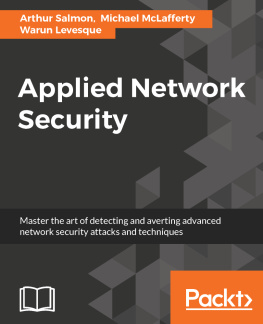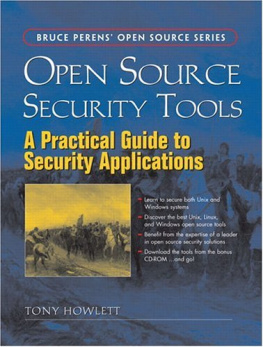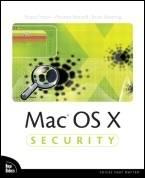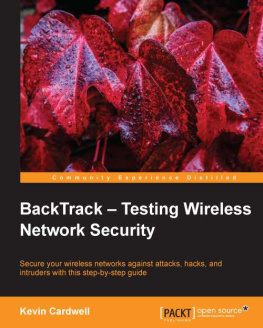Bryan Burns - Security Power Tools
Here you can read online Bryan Burns - Security Power Tools full text of the book (entire story) in english for free. Download pdf and epub, get meaning, cover and reviews about this ebook. year: 2007, publisher: OReilly Media, genre: Romance novel. Description of the work, (preface) as well as reviews are available. Best literature library LitArk.com created for fans of good reading and offers a wide selection of genres:
Romance novel
Science fiction
Adventure
Detective
Science
History
Home and family
Prose
Art
Politics
Computer
Non-fiction
Religion
Business
Children
Humor
Choose a favorite category and find really read worthwhile books. Enjoy immersion in the world of imagination, feel the emotions of the characters or learn something new for yourself, make an fascinating discovery.

- Book:Security Power Tools
- Author:
- Publisher:OReilly Media
- Genre:
- Year:2007
- Rating:3 / 5
- Favourites:Add to favourites
- Your mark:
Security Power Tools: summary, description and annotation
We offer to read an annotation, description, summary or preface (depends on what the author of the book "Security Power Tools" wrote himself). If you haven't found the necessary information about the book — write in the comments, we will try to find it.
What if you could sit down with some of the most talented security engineers in the world and ask any network security question you wanted? Security Power Tools lets you do exactly that! Members of Juniper Networks Security Engineering team and a few guest experts reveal how to use, tweak, and push the most popular network security applications, utilities, and tools available using Windows, Linux, Mac OS X, and Unix platforms.
Designed to be browsed, Security Power Tools offers you multiple approaches to network security via 23 cross-referenced chapters that review the best security tools on the planet for both black hat techniques and white hat defense tactics. Its a must-have reference for network administrators, engineers and consultants with tips, tricks, and how-to advice for an assortment of freeware and commercial tools, ranging from intermediate level command-line operations to advanced programming of self-hiding exploits.
Security Power Tools details best practices for:
- Reconnaissance -- including tools for network scanning such as nmap; vulnerability scanning tools for Windows and Linux; LAN reconnaissance; tools to help with wireless reconnaissance; and custom packet generation
- Penetration -- such as the Metasploit framework for automated penetration of remote computers; tools to find wireless networks; exploitation framework applications; and tricks and tools to manipulate shellcodes
- Control -- including the configuration of several tools for use as backdoors; and a review of known rootkits for Windows and Linux
- Defense -- including host-based firewalls; host hardening for Windows and Linux networks; communication security with ssh; email security and anti-malware; and device security testing
- Monitoring -- such as tools to capture, and analyze packets; network monitoring with Honeyd and snort; and host monitoring of production servers for file changes
- Discovery -- including The Forensic Toolkit, SysInternals and other popular forensic tools; application fuzzer and fuzzing techniques; and the art of binary reverse engineering using tools like Interactive Disassembler and Ollydbg
Bryan Burns: author's other books
Who wrote Security Power Tools? Find out the surname, the name of the author of the book and a list of all author's works by series.










